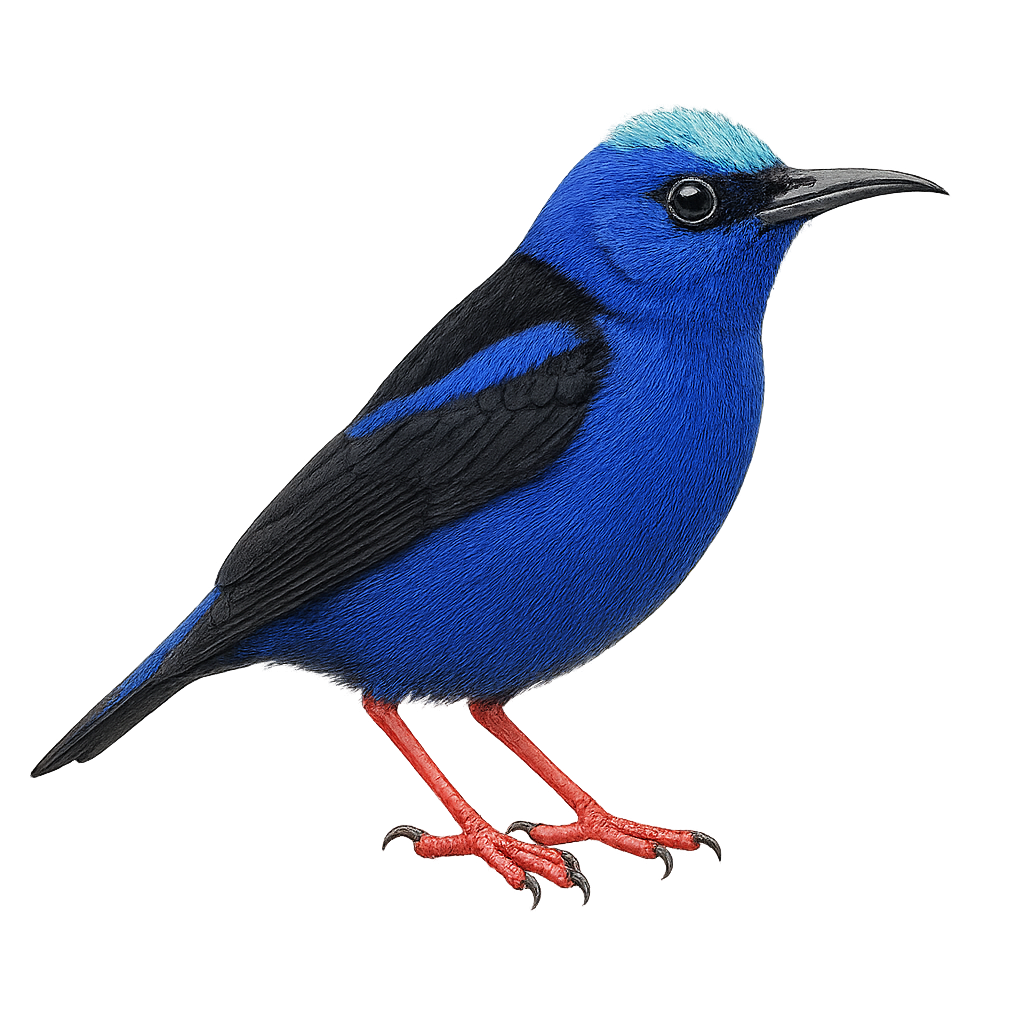Your wildlife photography guide.
Explore the red-legged honeycreeper in detail, study its behavior, prepare your shots.
Where to observe and photograph the red-legged honeycreeper in the wild
Learn where and when to spot the red-legged honeycreeper in the wild, how to identify the species based on distinctive features, and what natural environments it inhabits. The WildlifePhotographer app offers tailored photography tips that reflect the red-legged honeycreeper’s behavior, helping you capture better wildlife images. Explore the full species profile for key information including description, habitat, active periods, and approach techniques.
Red-legged Honeycreeper
Scientific name: Cyanerpes cyaneus

IUCN Status: Least Concern
Family: THRAUPIDAE
Group: Birds
Sensitivity to human approach: Suspicious
Minimum approach distance: 5 m
Courtship display: March to May
Incubation: 12-14 jours
Hatchings: March to June
Habitat:
Humid forests, wooded areas, forest edges
Activity period :
Primarily active during the day, with peak activity in the morning and late afternoon.
Identification and description:
The Red-legged Honeycreeper, Cyanerpes cyaneus, is a small, vibrantly colored tropical bird, primarily electric blue with black wings and red legs. It is commonly found in the humid forests and wooded areas of Central and South America. This nectarivore feeds mainly on nectar but also consumes fruits and insects. Males display a striking plumage, while females are generally olive green with bluish hues. The Red-legged Honeycreeper is a social bird, often seen in small groups, and is known for its aerial acrobatics when feeding. Its breeding season varies by region but is generally active year-round in tropical areas.
Recommended lens:
400 mm – adjust based on distance, desired framing (portrait or habitat), and approach conditions.
Photography tips:
To photograph the Red-legged Honeycreeper, focus on transition areas between dense forest and clearings where it is often active. Use a 400mm or longer telephoto lens to capture details without disturbing the bird. The natural light of morning or afternoon will highlight its vibrant colors. Be patient and discreet, as this bird can be suspicious. A tripod can help stabilize your camera for sharp shots.
The WildlifePhotographer App is coming soon!
Be the first to explore the best nature spots, track rutting seasons, log your observations, and observe more wildlife.
Already 1 432 wildlife lovers subscribed worldwide

